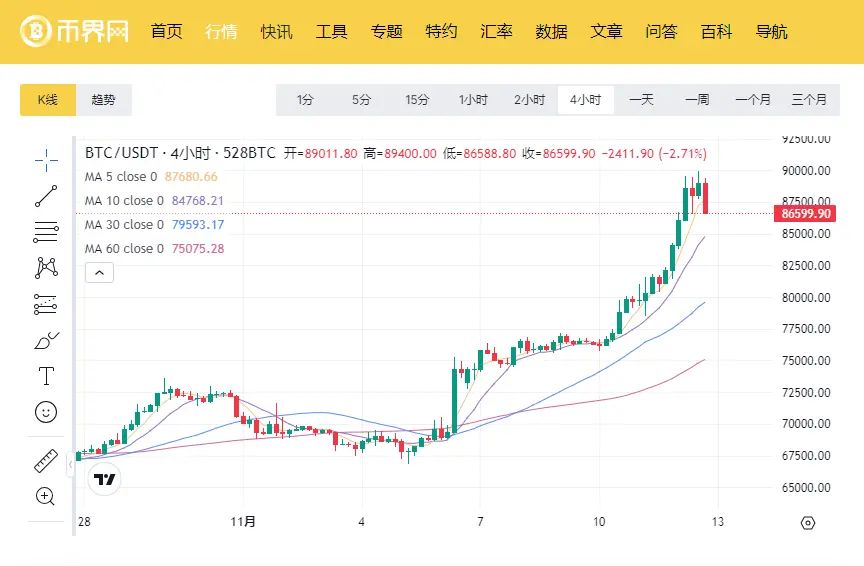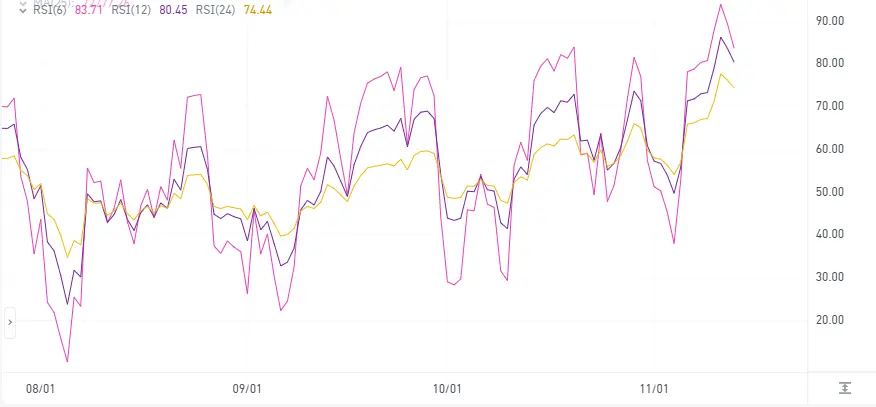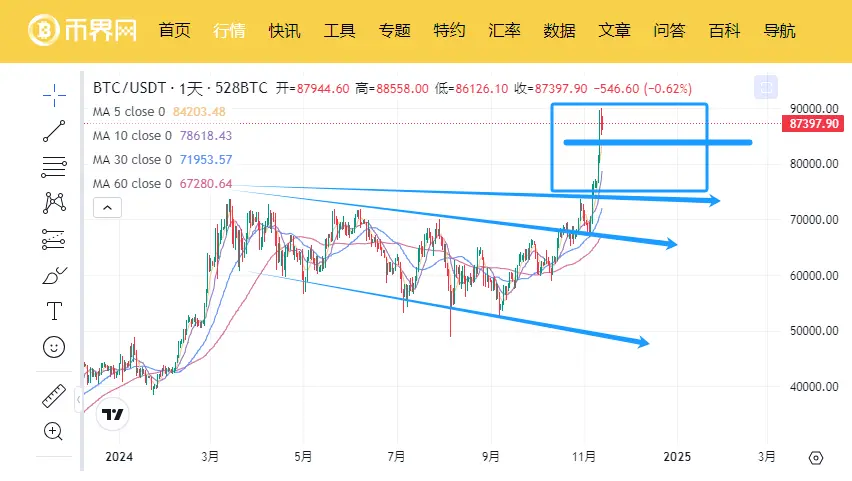Author: 636Marx
At 21:30 Beijing time, the United States will release the annual Consumer Price Index (CPI) data. More importantly, the Federal Reserve's key monetary policy body, the FOMC, will make important statements in conjunction with the CPI inflation data. Currently, Bitcoin is at an all-time high, and the entire digital currency market has high momentum, while the CPI data is crucial for understanding inflation trends. Bitcoin is now likely to fluctuate with the inflationary pressures of the US dollar and the subsequent actions of the Federal Reserve.
The author will explore the FOMC's statements, the upcoming CPI data, and how the Federal Reserve's policy stance triggers the intrinsic logic of Bitcoin's price.

Why Inflation Data and Federal Reserve Actions are Crucial for Bitcoin
FOMC Introduction
Today, Bitcoin's reputation as "digital gold" makes it highly attractive for those seeking to hedge against inflation and the devaluation of fiat currencies. Rising inflation typically boosts demand for assets perceived as stores of value, including Bitcoin. Therefore, when CPI data shows accelerating inflation, Bitcoin's price often rises, although market conditions may suppress this upward trend.
However, as the Federal Reserve is committed to curbing inflation, high CPI readings may prompt it to implement policy adjustments such as interest rate hikes, which historically weaken Bitcoin's appeal. As interest rates rise, the opportunity cost of holding non-yielding assets like Bitcoin increases, potentially triggering sell-offs as investors turn to traditional income-generating investments.
There exists this mutual logic between inflation rates, monetary policy, and Bitcoin prices.

FOMC Alliance Chair Barkin's Stance on Inflation and Interest Rate Policy
Barkin is known within the Federal Reserve for his pragmatism and advocacy for balanced interest rate adjustments. In recent remarks, he expressed a willingness to maintain policy flexibility and avoid overreacting to temporary inflation fluctuations.
Given his voting power in the 2024 FOMC, if CPI shows persistent inflationary pressures, he and other FOMC members are inclined to tighten monetary policy, which would make the market more cautious, especially regarding speculative assets like Bitcoin.

The Author Analyzes the Impact of CPI Data on Bitcoin
The annual CPI provides a snapshot of year-on-year inflation, and if it exceeds expectations, it may confirm that inflation remains stubborn. If the CPI report shows inflation above expectations, the market may interpret it as a signal for further interest rate hikes, putting pressure on Bitcoin.
Conversely, CPI data indicating a cooling of inflation may trigger optimistic sentiment regarding a shift in the Federal Reserve's policy stance, which, as inflation concerns ease, could drive incremental funds into Bitcoin.

Bitcoin Currently Shows Oversold Signals
Bitcoin has recently experienced a strong surge, reaching an all-time high. The author attributes this spike to institutional investors, a weakening dollar, and market expectations that the Federal Reserve will adopt a dovish policy stance. However, Bitcoin's technical indicators suggest it may be in an overbought state, indicating a potential upcoming correction.
Bitcoin's current trading level is close to the upper Bollinger Band, a common signal of overbought conditions. Another momentum indicator, the Relative Strength Index (RSI), has also entered the overbought zone, above 70, indicating that buying pressure may have peaked in the short term. These signals typically foreshadow a correction, suggesting that asset prices have risen too quickly relative to their historical performance.

Additionally, Fibonacci retracement levels indicate that key support zones lie between $75,000 and $80,000. If these support levels hold firm, a pullback to these levels would constitute a healthy correction cycle according to technical indicators.
However, if CPI data exceeds expectations and triggers a more severe sell-off, Bitcoin may test deeper support around $66,000.

Let’s Predict Possible Outcomes for Bitcoin
- Higher-than-expected CPI and Hawkish Federal Reserve Signals
A higher-than-expected CPI indicates persistent inflation, increasing the likelihood of continued interest rate hikes. Such an outcome could trigger a sell-off in Bitcoin as investors anticipate a further strengthening of the dollar.
Bitcoin may retest support zones at $75,000 or even $66,000, as institutions sell off risk assets due to a tightening financial environment.
- CPI in line with expectations and Dovish Federal Reserve Stance
If the CPI aligns with market expectations and the FOMC maintains a dovish stance, Bitcoin will be limited in its direct impact. In this scenario, Bitcoin's price may fluctuate within the range of $80,000 to $90,000.
If subsequent data or statements indicate fewer restrictions on Federal Reserve policy, Bitcoin may rebound.
- Lower-than-expected CPI and Dovish Federal Reserve Signals
A lower-than-expected CPI reinforces expectations for the Federal Reserve to pause interest rate hikes, in which case Bitcoin may surge again, potentially testing historical highs above $100,000.
This is because, in a potentially low-interest-rate environment, Bitcoin's appeal as a hedging tool will increase.
In conclusion, this article has little impact on long-term Bitcoin advocates. However, the release of inflation data and statements from Federal Reserve officials brings a predictable volatility to Bitcoin, significantly affecting Bitcoin contract traders.
免责声明:本文章仅代表作者个人观点,不代表本平台的立场和观点。本文章仅供信息分享,不构成对任何人的任何投资建议。用户与作者之间的任何争议,与本平台无关。如网页中刊载的文章或图片涉及侵权,请提供相关的权利证明和身份证明发送邮件到support@aicoin.com,本平台相关工作人员将会进行核查。




